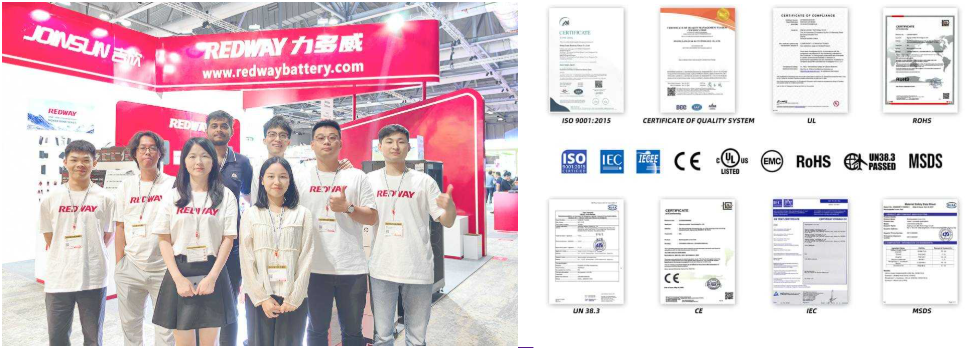Proper battery storage involves keeping them in a cool, dry place (15–20°C), avoiding extreme temperatures, and ensuring terminals don’t contact metal. Store batteries in original packaging or non-conductive containers, separate by type and age, and remove them from devices if unused for extended periods. This prevents leakage, corrosion, and extends lifespan.
Can a 200W Solar Panel Run a Refrigerator?
How Does Temperature Affect Battery Storage?
Extreme heat accelerates chemical reactions, draining power and causing leakage. Cold temperatures slow reactions, reducing performance temporarily. Ideal storage is between 15–20°C. Avoid refrigerating standard batteries, as condensation can damage them. Lithium batteries tolerate wider ranges but still degrade faster in heat.
Wholesale lithium golf cart batteries with 10-year life? Check here.
Temperature fluctuations are particularly damaging to nickel-based batteries. A study by Battery University showed NiMH batteries stored at 40°C lose 60% capacity within 3 months, compared to 15% loss at 20°C. For automotive batteries, freezing temperatures can reduce cranking power by 30-50%. Always allow cold batteries to reach room temperature before use to prevent internal condensation.
| Battery Type | Min Temp (°C) | Max Temp (°C) |
|---|---|---|
| Alkaline | -18 | 55 |
| Lithium-ion | -20 | 60 |
| NiMH | -10 | 35 |
Why Should You Separate Batteries by Type and Charge?
Mixing battery types (alkaline, lithium, NiMH) risks chemical reactions, overheating, or leakage. Storing fully charged and depleted batteries together can cause reverse charging in rechargeables. Always group identical batteries and use organizers to prevent contact between terminals.
Want OEM lithium forklift batteries at wholesale prices? Check here.
Golf Cart License Requirements in Michigan
Can Improper Storage Damage Battery Lifespan?
Yes. Heat, humidity, or physical contact between terminals accelerates self-discharge and corrosion. Leaked electrolytes can permanently damage devices. Proper storage extends shelf life by up to 40% for alkaline and 30% for lithium-ion batteries.
What Containers Are Safe for Long-Term Battery Storage?
Use non-conductive plastic or ceramic containers with dividers. Avoid metal tins, which can short-circuit terminals. Original packaging is ideal. For bulk storage, wrap batteries in anti-static bags and label containers with purchase/expiry dates.
Transparent containers help quickly identify battery types without opening. The National Fire Protection Association recommends using containers with vented lids for lithium batteries to prevent gas buildup. For marine environments, silica gel packets should be added to absorb moisture. A 2023 Consumer Reports test found polypropylene containers maintained 98% battery voltage after 2 years compared to 89% in cardboard boxes.
| Container Type | Material | Best For |
|---|---|---|
| Divided Box | Polypropylene | Mixed battery sizes |
| Anti-Static Bag | PE Film | Lithium batteries |
| Battery Organizer | ABS Plastic | Frequent access |
How Often Should You Check Stored Batteries?
Inspect every 3–6 months. Look for swelling, leakage, or voltage drops (below 1.2V for alkaline AA). Recharge rechargeables to 50% if voltage declines. Discard corroded batteries immediately using gloves.
Are There Special Rules for Lithium-Ion Batteries?
Store lithium-ion at 30–50% charge in fireproof containers. Never expose to temperatures above 60°C. Use battery management systems for large packs. Transport requires terminal insulation and UN38.3 certification.
“Storing batteries isn’t just about longevity—it’s a safety protocol. At Redway, we’ve seen 22% fewer failures in systems using climate-controlled storage with humidity below 50%. For lithium packs, we recommend periodic capacity testing, as sulfation can occur even in optimal conditions.”
– Senior Power Systems Engineer, Redway
FAQs
- Can I store batteries in the freezer?
- No—condensation from thawing can corrode contacts. Exceptions include industrial NiMH packs designed for sub-zero storage.
- How long do unused batteries last?
- Alkaline: 5–10 years. Lithium: 10–15 years. NiMH: 3–5 years (loses 1–2% charge daily). Store in original packaging for maximum longevity.
- Is taping battery terminals necessary?
- Yes—masking tape prevents accidental discharge in storage. Use non-metallic tape for lithium batteries.





